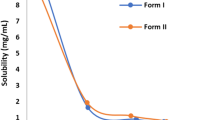ABSTRACT
This manuscript discusses global regulatory divergence of dissolution requirements for modified release solid oral dosage forms and the obstacles that must be addressed to be compliant with evolving guidance and legislation. The proliferation of local guidance documents, changing regulatory expectations, and increased legal enforcement has resulted in mismatched country-specific dissolution testing requirements and similarity criteria, and heightens industry’s challenges with registration of modified release solid oral dosage forms. The lack of global harmonization and the complexity added by minor regional adaptations contributes to inefficiencies and hinders industry’s goal of developing and delivering medicines. Awareness of country-specific similarity requirements and alignment between industry leaders and regulators is needed to facilitate global harmonization which will enable delivering new and improved medicines. The purpose of this manuscript is to compare and contrast in vitro conditions stated in local regulatory guidelines, raise awareness of the need to work toward harmonization of global requirements, and propose an initial study design toward that aspiration.


Similar content being viewed by others
REFERENCES
Department of Health, Therapeutic Goods Administration, Australia. Guidance 15: biopharmaceutic studies, no. Version 1.1, April 2015.
National Health Surveillance Agency, Brazil. About the studies of pharmaceutical equivalence and comparative dissolution profile. Collegiate Directory, Vols Resolution-RDC No 31, August 2010.
Health Canada. Drugs and Health Products.Post-notice of compliance (NOC) changes: quality document. Vols. File Number 13–107786-650, 2013.
China FDA. Center for Drug Evaluation. Technical guidelines for supplementary application of chemical drugs (the second draft). 2015.
European Medicines Agency. Committee for Medicinal Products for Human Use (CHMP). Guideline on quality of oral modified release products, vol. EMA/CHMP/QWP/428693/2013, 2014.
Central Drugs Standard Control Organization, Ministry of Health and Family Welfare, Government of India. Guideline for bioavailability and bioequivalence studies. 2005.
Pharmaceutical and Food Safety Bureau, Japan. Guideline for bioequivalence studies of oral solid preparations with different strengths, Vols. PMSB/ELD Notification Number 64, revised November 24, 2006, February 2001.
Pharmaceutical Food and Safety Bureau, Japan. Guideline for bioequivalence studies of oral solid formulations with formulation changes, Vols. PMSB/ELD Notification Number 67, Revised November 2006, February 2000.
Pharmaceutical and Food Safety Bureau, Japan. The guideline for bioequivalence studies for supplemental formulations with different dosage forms, vol. PMSB/ELD Notification Number 783, May 2001.
Pharmaceutical and Food Safety Bureau, Japan. Q&A on: guideline for bioequivalence test on oral solid preparation with different drug contents, Guideline for bioequivalence test on Oral solid preparation which the formulation has been changed, " Vols. PFSB/ELD Notice, Revised November 2001, May 2001.
L. a. W. (. Ministry of Health, "Supplement II to the Japanese pharmacopoeia," Promulgated by Ministerial Notification, no. No.65, March 24, 2011.
Comisión Federal para la Protección contra Riesgos Sanitarios (COFEPRIS). Official Mexican Standard NOM-177-SSA1–2013. Official Gazette; 2013.
Federal Service on Surveillance in Healthcare and Social Development. Methodological recommendations for drug manufacturers on in vitro equivalence test for generic drug products according to biowaiver procedure. 2012.
Drug Control Division, Thailand. Guidelines for the Conduct of bioavailability and bioequivalence studies adopted from “ASEAN Guidelines for the Conduct of Bioavailability and Bioequivalence Studies, 2009.
ASEAN Guideline for the conduct of bioequivalence studies. (8th PPWG meeting, Bangkok); 2004.
Ministry of Health, Republic of Turkey. Pharmaceuticals and pharmacy general directorate number B.10.0.IEG.0.10.00.03-301.99-. vol. On Bioequivalence Files 24305.
Medicines Control Council, Department of Health, Republic of South Africa. Registration of Medicines: dissolution, vol. Version 2. 2007.
Korea Ministry of Food and Drug Safety. KFDA guidelines for Comparative Dissolution Test. Vols. KFDA Notification No. 2010–44. 2010.
Korean Pharmacopoeia. Ministry of Food and Drug Safety Notification No. 2018–16. Vols. 03. 08, Amended, 2018.
FDA Guidance For Industry. SUPAC-MR: modifed release solid oral dosage forms. 1997.
FDA Guidance for Industry. Extended release oral dosage forms:development, evaluation, and application of in vitro/in vivo correlations. vol. BP2, September 1997.
FDA Guidance For Industry. Bioavailability and bioequivalence studies for orally administered drug products, general considerations. 2003.
Pharmaceuticals and Medical Devices Agency, Japan. Guideline for Bioequivalence studies for formulation changes of oral solid dosage forms. English translation of Attachment 3 of Division-Notification 0229 No. 10 of the Pharmaceutical and Food Safet Bureau. 2012.
United States Pharmacopeia, "<711> DISSOLUTION," 2011.
Shargel L, Yu A, Wu-Pong S. Applied biopharmaceutics and pharmacokinetics. 6th ed. New York: McGraw Hill Medical; 2012.
Diaz DA, Colgan ST, Langer CS, Likar M, Van Alstine L, Bandi N. Dissolution similarity requirements: how similar or dissimilar are the global regulatory expectations? AAPS J. 2016;18(1):15–22.
European Medicines Agency. Question and answer on the adequacy of the Mahalanobis distance to assess the comparability of drug dissolution profiles. EMA/810713/2017 Human Medicines Research and Development Support, 26 July 2018.
Hirschler B. Ex-FDA head and Sanofi call for harmonized drug regulation. Reuters, May 2016.
ACKNOWLEDGMENTS
The authors would like to thank Roger Nosal, Michael Likar, John Groskoph, Beth Kendsersky, Loren Wrisley, Ron Ogilvie, Michael Cohen, Megan McMahon, Ling Zhang, and Gregg Kelly for reviewing and providing helpful comments on this paper.
Author information
Authors and Affiliations
Corresponding author
Additional information
Publisher’s Note
Springer Nature remains neutral with regard to jurisdictional claims in published maps and institutional affiliations.
Rights and permissions
About this article
Cite this article
Langer, C., Diaz, D., Van Alstine, L. et al. Analysis of the Regulatory Divergence of Comparative Dissolution Requirements for Post-Approval Manufacturing Changes of Modified Release Solid Oral Dosage Forms. AAPS J 22, 2 (2020). https://doi.org/10.1208/s12248-019-0383-1
Received:
Accepted:
Published:
DOI: https://doi.org/10.1208/s12248-019-0383-1




